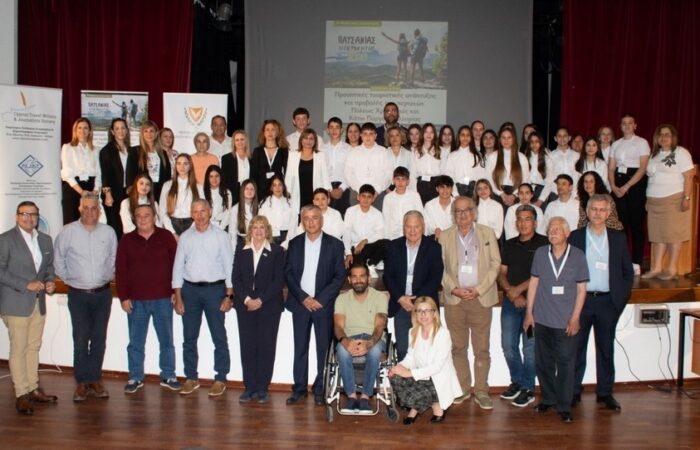Timisoara has officially ended exercising the title of European Capital of Culture, through the gala that took place at the end of December, 2023 at the Palace of Culture, in the presence of hundreds of officials, cultural operators, guests from the country and abroad.
Η Τιμισοάρα ολοκλήρωσε επίσημα τον τίτλο της Πολιτιστικής Πρωτεύουσας της Ευρώπης με την τελετή λήξης, που πραγματοποιήθηκε στα τέλη του Δεκέμβρη, 2023 στο Μέγαρο Πολιτισμού, παρουσία εκατοντάδων επισήμων, πολιτιστικών φορέων, προσκεκλημένων από τη χώρα και το εξωτερικό.  The closing event of the Brancuși exhibition took place last January (27th-29th) at the Palace of Culture, in the presence of officials, cultural operators, mass media people, guests from the country and abroad. We, Cyprus Travel Writers & Journalists Society, member of World Federation of Travel Journalists and Writers (FIJET), were invited in this official event and our member, Loucas Hamatsos represented successfully our Association.
The closing event of the Brancuși exhibition took place last January (27th-29th) at the Palace of Culture, in the presence of officials, cultural operators, mass media people, guests from the country and abroad. We, Cyprus Travel Writers & Journalists Society, member of World Federation of Travel Journalists and Writers (FIJET), were invited in this official event and our member, Loucas Hamatsos represented successfully our Association.
Η τελετή λήξης της Έκθεση Brancusi πραγματοποιήθηκε μεταξύ 27 και 29 Ιανουαρίου, 2024 στο Μέγαρο Πολιτισμού, παρουσία επισήμων, πολιτιστικών φορέων, δημοσιογράφων, προσκεκλημένων από τη χώρα και το εξωτερικό. Ο Παγκύπριος Σύνδεσμος Συγγραφέων & Δημοσιογράφων Τουρισμού, Μέλος της Παγκόσμιας Ομοσπονδίας Δημοσιογράφων & Συγγραφέων Τουρισμού (FIJET) ήμασταν προσκεκλημένοι στο επίσημο γεγονός και το μέλος μας, Λουκάς Χαμάτσος εκπροσώπησε με επιτυχία τον Σύλλογό μας.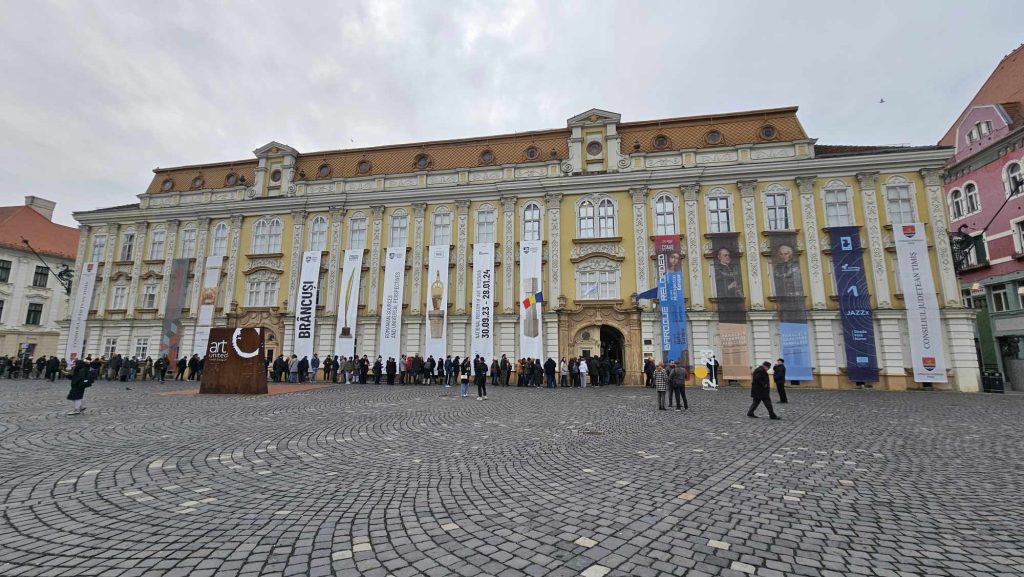 The exhibition Brancusi – Romanian Sources and Universal Perspectives, a highlight of the Timisoara Capital of Culture program and the most extensive retrospective dedicated to Constantin Brancusi in Romania, attracted a total of over 130.000 visitors. The city’s National Museum of Art hosted the event for four months between September 30, 2023, and January 28, 2024.
The exhibition Brancusi – Romanian Sources and Universal Perspectives, a highlight of the Timisoara Capital of Culture program and the most extensive retrospective dedicated to Constantin Brancusi in Romania, attracted a total of over 130.000 visitors. The city’s National Museum of Art hosted the event for four months between September 30, 2023, and January 28, 2024.
Η έκθεση Brancusi – Romanian Sources and Universal Perspectives, ήταν το αποκορύφωμα του προγράμματος Πολιτιστική Πρωτεύουσα της Τιμισοάρα και η πιο εκτεταμένη αναδρομική αφιερωμένη στον Constantin Brancusi στη Ρουμανία, προσέλκυσε συνολικά περισσότερους από 130.000 επισκέπτες. Το Εθνικό Μουσείο Τέχνης της πόλης φιλοξένησε την εκδήλωση για τέσσερις μήνες μεταξύ 30 Σεπτεμβρίου 2023 και 28 Ιανουαρίου 2024. Loukas Hamatsos was excited to know that the exhibition was an example of successful collaboration between Romania cultural entities and some of the world’s great museums, including Centre Pompidou and Tate Modern. The public’s reaction to the exhibition was welcoming and this exhibition has widened the public’s appetite for quality culture. The exhibition was also a great opportunity for schoolchildren to discover the work of Brancusi. Over 26.000 pupils from more than 900 schools visited the art event from Timisoara and 26 other cities in the country, 18 municipalities and villages in the region, as well as from abroad, from countries such as Germany, Austria, France, Italy, Poland, Bulgaria, Canada, Czech Republic and Hungary.
Loukas Hamatsos was excited to know that the exhibition was an example of successful collaboration between Romania cultural entities and some of the world’s great museums, including Centre Pompidou and Tate Modern. The public’s reaction to the exhibition was welcoming and this exhibition has widened the public’s appetite for quality culture. The exhibition was also a great opportunity for schoolchildren to discover the work of Brancusi. Over 26.000 pupils from more than 900 schools visited the art event from Timisoara and 26 other cities in the country, 18 municipalities and villages in the region, as well as from abroad, from countries such as Germany, Austria, France, Italy, Poland, Bulgaria, Canada, Czech Republic and Hungary.
Ο Λουκάς Χαμάτσος ήταν ενθουσιασμένος όταν έμαθε ότι, η έκθεση ήταν ένα παράδειγμα επιτυχημένης συνεργασίας μεταξύ πολιτιστικών φορέων της Ρουμανίας και μερικών από τα σπουδαία μουσεία του κόσμου, συμπεριλαμβανομένων των Κέντρου Μπομπιτού και Tate Modern. Η αντίδραση του κοινού στην έκθεση ήταν ευπρόσδεκτη και αυτή η έκθεση έχει διευρύνει το ενδιαφέρον του κοινού για ποιοτικό πολιτισμό. Η έκθεση ήταν επίσης μια εξαιρετική ευκαιρία για τους μαθητές να ανακαλύψουν το έργο του Brancusi. Πάνω από 26.000 μαθητές από περισσότερα από 900 σχολεία επισκέφτηκαν την εικαστική εκδήλωση από την Τιμισοάρα και άλλες 26 πόλεις της χώρας, 18 δήμους και χωριά της περιοχής, καθώς και από το εξωτερικό, από χώρες όπως Γερμανία, Αυστρία, Γαλλία, Ιταλία, Πολωνία, Βουλγαρία, Καναδάς, Τσεχία και Ουγγαρία. 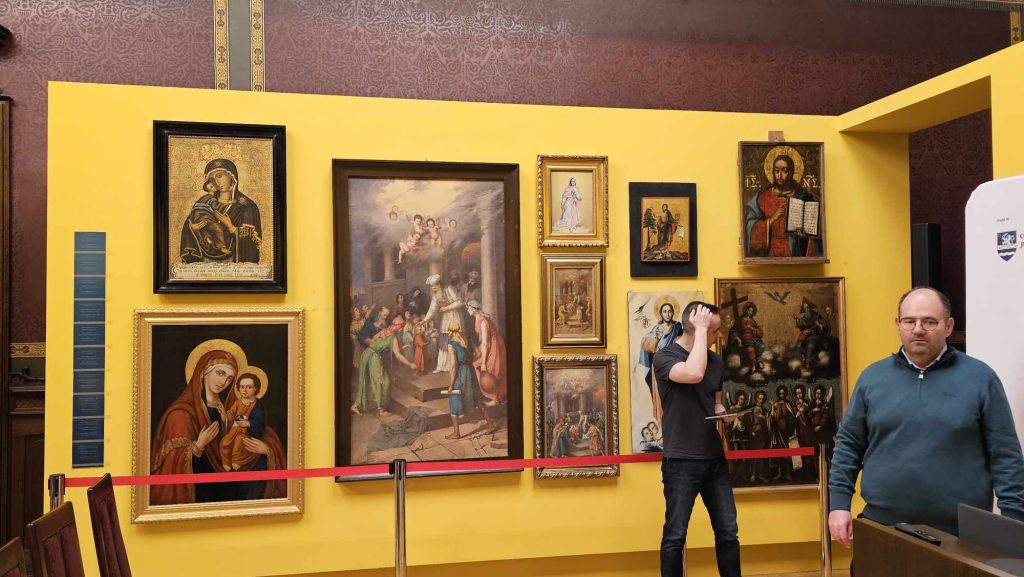 By designating Timisoara with the title of European Capital of Culture for the year 2023, the city formulated its objectives, focusing on the people’s participation and influence on the community in which they live. Thus, the aim was to become a city where cultural excellence prevails, providing the citizens with the confidence that through participation and engagement, it will be possible to make significant changes in the city of Timisoara.
By designating Timisoara with the title of European Capital of Culture for the year 2023, the city formulated its objectives, focusing on the people’s participation and influence on the community in which they live. Thus, the aim was to become a city where cultural excellence prevails, providing the citizens with the confidence that through participation and engagement, it will be possible to make significant changes in the city of Timisoara.
Ορίζοντας την Τιμισοάρα με τον τίτλο της Πολιτιστικής Πρωτεύουσας της Ευρώπης για το έτος 2023, η πόλη διαμόρφωσε τους στόχους της, εστιάζοντας στη συμμετοχή και την επιρροή των ανθρώπων στην κοινότητα στην οποία ζουν. Έτσι, στόχος ήταν να γίνει μια πόλη όπου κυριαρχεί η πολιτιστική αριστεία, παρέχοντας στους πολίτες τη σιγουριά ότι μέσω της συμμετοχής και της ενασχόλησης, θα γίνει κατορθωτό να γίνουν σημαντικές αλλαγές στην πόλη της Τιμισοάρα. The exhibition received extensive national media coverage, with over 1,000 appearances on major television, radio, print, and online media, and was reviewed in over 70 articles in international publications, including prestigious dailies such as The New York Times, Financial Times, Le Monde, Le Figaro or Frankfurter Allgemeine Zeitung, being praised in the pages of important art magazines such as The Art Newspaper, Artribune, Il Giornale dell’Arte, Artension or Le Journal des Arts.
The exhibition received extensive national media coverage, with over 1,000 appearances on major television, radio, print, and online media, and was reviewed in over 70 articles in international publications, including prestigious dailies such as The New York Times, Financial Times, Le Monde, Le Figaro or Frankfurter Allgemeine Zeitung, being praised in the pages of important art magazines such as The Art Newspaper, Artribune, Il Giornale dell’Arte, Artension or Le Journal des Arts.
Η έκθεση έλαβε εκτεταμένη κάλυψη από τα εθνικά μέσα ενημέρωσης, με περισσότερες από 1.000 εμφανίσεις σε μεγάλα τηλεοπτικά, ραδιόφωνα, έντυπα και διαδικτυακά μέσα ενημέρωσης και αξιολογήθηκε σε περισσότερα από 70 άρθρα σε διεθνείς εκδόσεις, συμπεριλαμβανομένων διάσημων εφημερίδων όπως The New York Times, Financial Times, Le Monde, Le Figaro ή Frankfurter Allgemeine Zeitung, που επαινείται στις σελίδες σημαντικών περιοδικών τέχνης όπως The Art Newspaper, Artribune, Il Giornale dell’Arte, Artension ή Le Journal des Arts.
The museum’s collection includes works of Romanian and European art, as well as temporary exhibitions of contemporary art. Among the notable exhibits are the paintings of the Romanian artist Nicolae Grigorescu, as well as works by other Romanian artists such as Theodor Aman and Gheorghe Petrascu.
Η συλλογή του μουσείου περιλαμβάνει έργα ρουμανικής και ευρωπαϊκής τέχνης, καθώς και προσωρινές εκθέσεις σύγχρονης τέχνης. Μεταξύ των αξιοσημείωτων εκθεμάτων είναι οι πίνακες του Ρουμάνου καλλιτέχνη Nicolae Grigorescu, καθώς και έργα άλλων Ρουμάνων καλλιτεχνών όπως ο Theodor Aman και ο Gheorghe Petrascu. In addition to the permanent collection and temporary exhibits, the museum also hosts a variety of cultural events, including concerts, lectures, and workshops.
In addition to the permanent collection and temporary exhibits, the museum also hosts a variety of cultural events, including concerts, lectures, and workshops.
Εκτός από τη μόνιμη συλλογή και τα προσωρινά εκθέματα, το μουσείο φιλοξενεί επίσης μια ποικιλία πολιτιστικών εκδηλώσεων, όπως συναυλίες, διαλέξεις και εργαστήρια.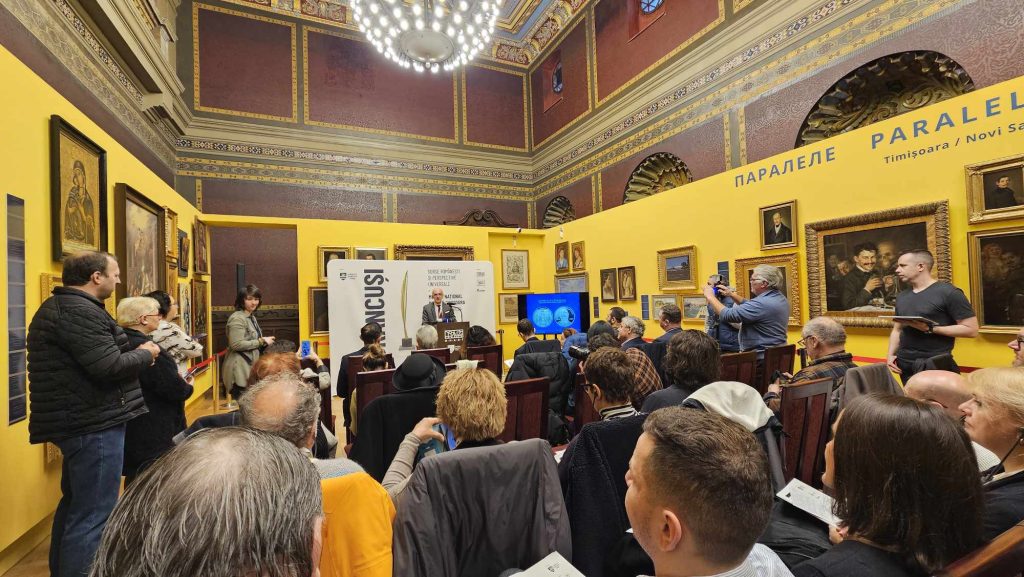 The Palace of Culture is an emblematic building in Timișoara, Romania. It hosts a number of cultural institutions, including the Romanian National Opera, the Mihai Eminescu National Theatre, the Csiky Gergely Hungarian State Theatre and the German State Theatre.
The Palace of Culture is an emblematic building in Timișoara, Romania. It hosts a number of cultural institutions, including the Romanian National Opera, the Mihai Eminescu National Theatre, the Csiky Gergely Hungarian State Theatre and the German State Theatre.
Το Μέγαρο Πολιτισμού είναι ένα εμβληματικό κτίριο στην Τιμισοάρα της Ρουμανίας. Στεγάζει μια σειρά από πολιτιστικά ιδρύματα και κρατικές σκηνές, όπως η Εθνική Όπερα της Ρουμανίας, το Εθνικό Θέατρο Mihai Eminescu, το Ουγγρικό Κρατικό Θέατρο Csiky Gergely και το Γερμανικό Κρατικό Θέατρο. 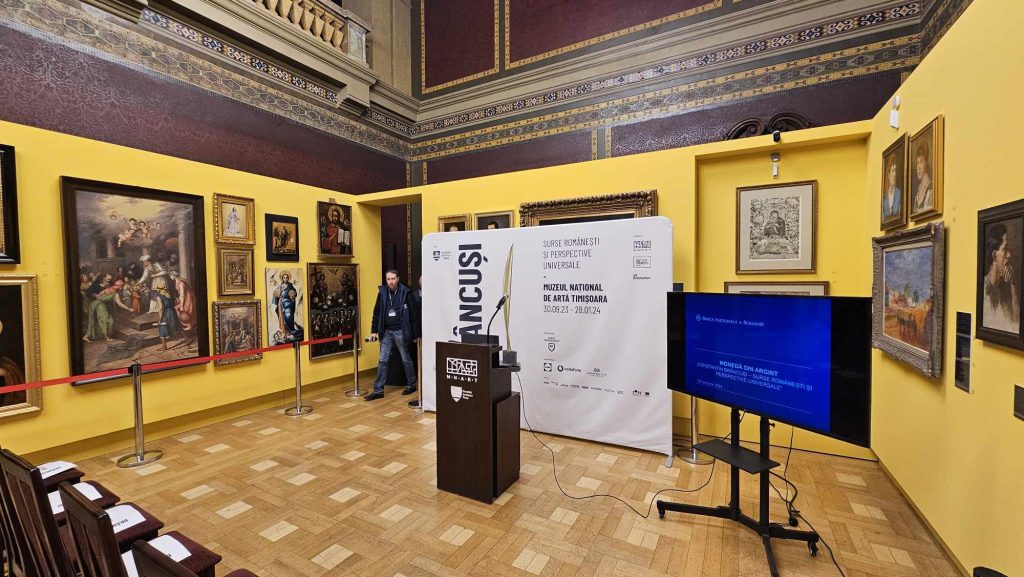 A cultural event that left its mark far beyond Timisoara.
A cultural event that left its mark far beyond Timisoara.
Ένα πολιτιστικό γεγονός που άφησε το στίγμα του πολύ πέρα από την Τιμισοάρα.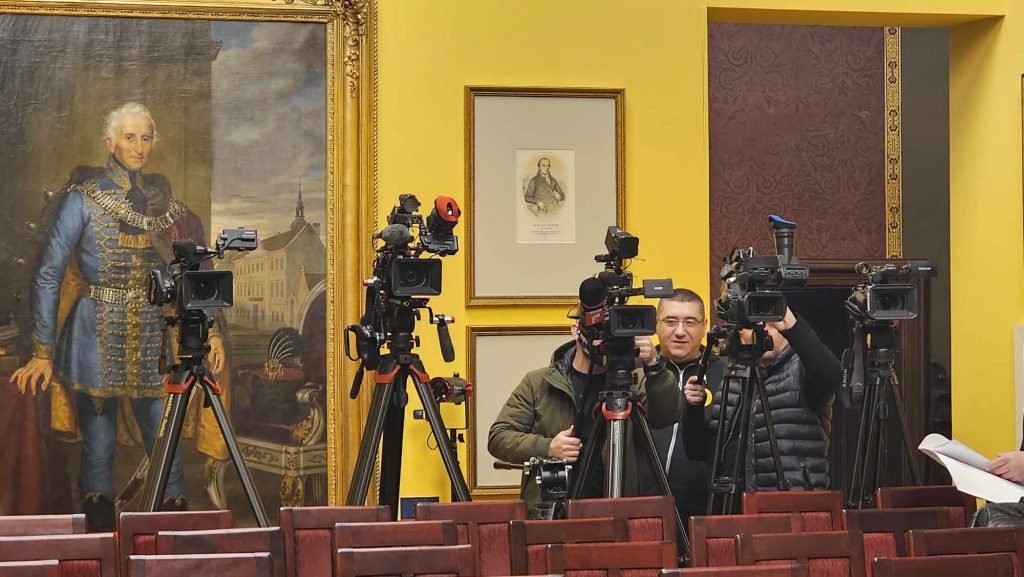 On 20 December 1989, during the Romanian Revolution, the Democratic Romanian Front was founded in the Palace of Culture and Timișoara was declared free from communism. The building is a historical monument of national importance. It occupies the northern side of Victory Square and is one of the main landmarks of the city.
On 20 December 1989, during the Romanian Revolution, the Democratic Romanian Front was founded in the Palace of Culture and Timișoara was declared free from communism. The building is a historical monument of national importance. It occupies the northern side of Victory Square and is one of the main landmarks of the city.
Στις 20 Δεκεμβρίου 1989, κατά τη διάρκεια της Ρουμανικής Επανάστασης, ιδρύθηκε το Δημοκρατικό Ρουμανικό Μέτωπο στο Μέγαρο Πολιτισμού και η Τιμισοάρα κηρύχθηκε απαλλαγμένη από τον κομμουνισμό. Το κτίριο είναι ιστορικό μνημείο εθνικής σημασίας. Καταλαμβάνει τη βόρεια πλευρά της Πλατείας Νίκης και είναι ένα από τα κύρια ορόσημα της πόλης. The main objective was to promote the European journey of Timisoara, through which the European and international partners were offered the opportunity to present their culture as part of the common European heritage.
The main objective was to promote the European journey of Timisoara, through which the European and international partners were offered the opportunity to present their culture as part of the common European heritage.
Ο κύριος στόχος ήταν η προώθηση του ευρωπαϊκού ταξιδιού της Τιμισοάρα, μέσω του οποίου προσφέρθηκε στους Ευρωπαίους και διεθνείς εταίρους η ευκαιρία να παρουσιάσουν τον πολιτισμό τους ως μέρος της κοινής ευρωπαϊκής κληρονομιάς. In addition to these events, various cultural activities, exhibitions and performances were organized in every corner of Timisoara.
In addition to these events, various cultural activities, exhibitions and performances were organized in every corner of Timisoara.
Εκτός από τις διάφορες εκδηλώσεις, οργανώθηκαν σε κάθε γωνιά της Τιμισοάρα ποικίλες πολιτιστικές δραστηριότητες, εκθέσεις και παραστάσεις.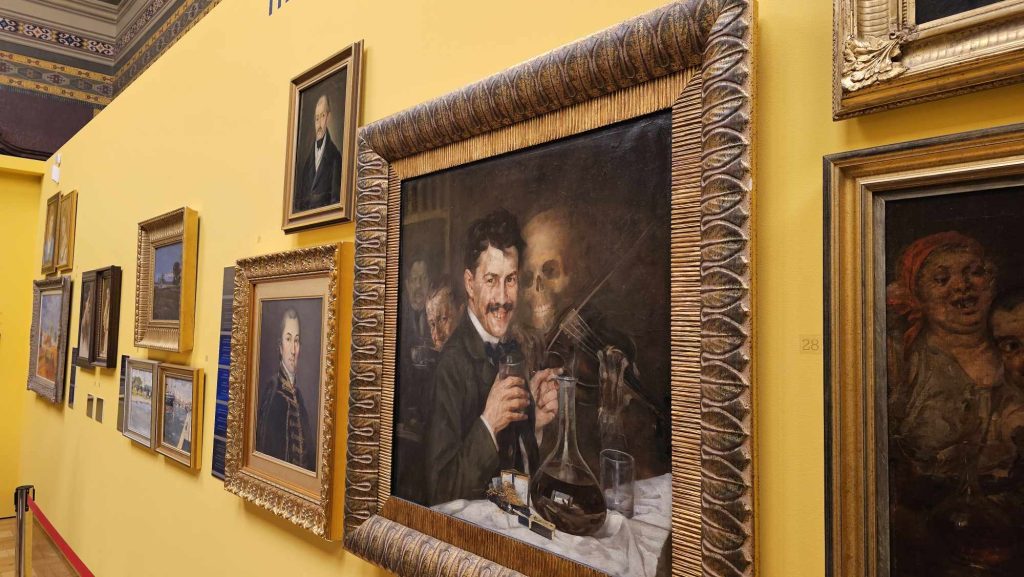 The high point of the event held in this city, reminiscent of the Austrian imperial spirit with its colossal buildings and grand squares, is an exhibition on the most illustrious of this country’s artistic offspring: Constantin Brancusi (1876-1957).
The high point of the event held in this city, reminiscent of the Austrian imperial spirit with its colossal buildings and grand squares, is an exhibition on the most illustrious of this country’s artistic offspring: Constantin Brancusi (1876-1957).
Το αποκορύφωμα της εκδήλωσης που πραγματοποιήθηκε σε αυτή την πόλη, που θυμίζει το αυστριακό αυτοκρατορικό πνεύμα με τα κολοσσιαία κτίρια και τις μεγάλες πλατείες, είναι μια έκθεση για τους πιο επιφανείς καλλιτεχνικούς απογόνους αυτής της χώρας: τον Constantin Brancusi (1876-1957). The exhibition “Brancuși: Romanian Sources and Universal Perspectives” seeks to illustrate the particularity of the artist who managed to create pure forms, freed from any influence. Through the dialogue that he establishes with matter and that allows him to extract the essence of beings and objects, Brâncuși crosses all geographical, historical, formal, and gender boundaries, which ensures him a special place, not attaching him to any artistic current.
The exhibition “Brancuși: Romanian Sources and Universal Perspectives” seeks to illustrate the particularity of the artist who managed to create pure forms, freed from any influence. Through the dialogue that he establishes with matter and that allows him to extract the essence of beings and objects, Brâncuși crosses all geographical, historical, formal, and gender boundaries, which ensures him a special place, not attaching him to any artistic current.
Η έκθεση «Brancuși: Romanian Sources and Universal Perspectives» επιχειρεί να απεικονίσει την ιδιαιτερότητα του καλλιτέχνη που κατάφερε να δημιουργήσει καθαρές φόρμες, απαλλαγμένες από κάθε επιρροή. Μέσα από τον διάλογο που εγκαθιδρύει με την ύλη και που του επιτρέπει να εξάγει την ουσία των όντων και των αντικειμένων, ο Brâncuși ξεπερνά όλα τα γεωγραφικά, ιστορικά, τυπικά και έμφυλα όρια, κάτι που του εξασφαλίζει μια ξεχωριστή θέση, χωρίς να τον συνδέει με κανένα καλλιτεχνικό ρεύμα.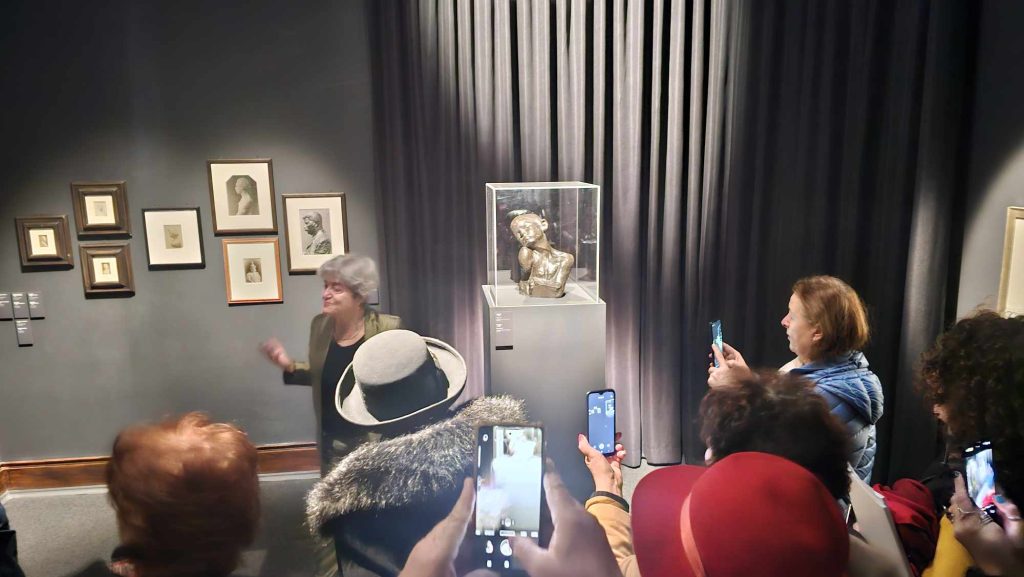 The exhibition brings to the public’s awareness different stages of Brancusi’s artistic career: from the works created under the influence of education at the School of Fine Arts in Bucharest to the confrontation with Rodin’s sculpture and up to his radical decision to abandon modelling and adopt the method of direct grinding – which marks his symbolic return to the primitive arts and opens, at the same time, the way to modernity.
The exhibition brings to the public’s awareness different stages of Brancusi’s artistic career: from the works created under the influence of education at the School of Fine Arts in Bucharest to the confrontation with Rodin’s sculpture and up to his radical decision to abandon modelling and adopt the method of direct grinding – which marks his symbolic return to the primitive arts and opens, at the same time, the way to modernity.
Η έκθεση φέρει στη συνείδηση του κοινού διάφορα στάδια της καλλιτεχνικής σταδιοδρομίας του Μπρανκούσι: από τα έργα που δημιουργήθηκαν υπό την επίδραση της εκπαίδευσης στη Σχολή Καλών Τεχνών του Βουκουρεστίου μέχρι την αντιπαράθεση με τη γλυπτική του Ροντέν και μέχρι τη ριζοσπαστική του απόφαση να εγκαταλείψει το μόντελινγκ και να υιοθετήσει τη μέθοδος άμεσης λείανσης – που σηματοδοτεί τη συμβολική επιστροφή του στις πρωτόγονες τέχνες και ανοίγει, ταυτόχρονα, το δρόμο προς τη νεωτερικότητα. The extraordinary exhibition “Brancusi: Romanian Sources and Universal Perspectives” has come to an end, but it leaves behind an important bilingual catalogue (Romanian-English) coordinated by Doina Lemny, the exhibition’s curator, which reproduces 190 images of Constantin Brancusi’s sculptures, drawings, and photographs, alongside documentary images. Published by the Art Encounters Foundation, the catalogue brings together 16 original texts signed by Romanian, French, and English art historians.
The extraordinary exhibition “Brancusi: Romanian Sources and Universal Perspectives” has come to an end, but it leaves behind an important bilingual catalogue (Romanian-English) coordinated by Doina Lemny, the exhibition’s curator, which reproduces 190 images of Constantin Brancusi’s sculptures, drawings, and photographs, alongside documentary images. Published by the Art Encounters Foundation, the catalogue brings together 16 original texts signed by Romanian, French, and English art historians.
Η εξαιρετική έκθεση «Brancusi: Romanian Sources and Universal Perspectives» έφτασε στο τέλος της, αλλά αφήνει πίσω της έναν σημαντικό δίγλωσσο κατάλογο (ρουμανικά-αγγλικά) που συντονίζει η Doina Lemny, η επιμελήτρια της έκθεσης, ο οποίος αναπαράγει 190 εικόνες από γλυπτά και σχέδια του Constantin Brancusi. , και φωτογραφίες, παράλληλα με εικόνες ντοκιμαντέρ. Δημοσιεύτηκε από το Ίδρυμα Art Encounters, ο κατάλογος συγκεντρώνει 16 πρωτότυπα κείμενα υπογεγραμμένα από Ρουμάνους, Γάλλους και Άγγλους ιστορικούς τέχνης. The show has been orchestrated by a great Brancusi specialist, historian Doina Lemny. She is presenting new perspectives on the subject – primarily to do with Brancusi’s Romanian-ness. In other words, how one of the must celebrated sculptors of the 20th century, at the beginning and end of his career, created for his country of birth and was inspired by it. This preoccupation goes hand in hand with the artist’s taste for the pared back aesthetic.
The show has been orchestrated by a great Brancusi specialist, historian Doina Lemny. She is presenting new perspectives on the subject – primarily to do with Brancusi’s Romanian-ness. In other words, how one of the must celebrated sculptors of the 20th century, at the beginning and end of his career, created for his country of birth and was inspired by it. This preoccupation goes hand in hand with the artist’s taste for the pared back aesthetic.
Η παράσταση έχει ενορχηστρωθεί από μια σπουδαία σπεσιαλίστα των Brancusi, την ιστορικό Doina Lemny. Παρουσιάζει νέες προοπτικές για το θέμα – κυρίως σε σχέση με τη ρουμανικότητα του Μπρανκούζι. Με άλλα λόγια, πώς ένας από τους σημαντικότερους γλύπτες του 20ου αιώνα, στην αρχή και στο τέλος της καριέρας του, δημιούργησε για τη χώρα γέννησής του και εμπνεύστηκε από αυτήν. Αυτή η ενασχόληση συμβαδίζει με το γούστο του καλλιτέχνη για την ανανεωμένη αισθητική.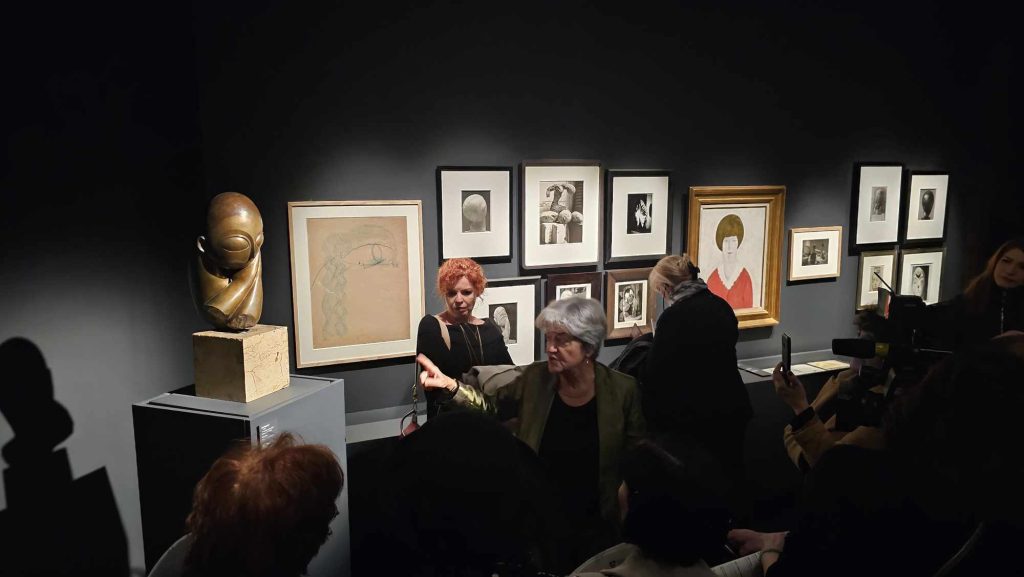 The sculptor Constantin Brancusi (1876-1957), who was born in Romania, is known as a pioneering artist who, through his exploration of pure form, carved out new territory in twentieth-century sculpture, post Rodin.
The sculptor Constantin Brancusi (1876-1957), who was born in Romania, is known as a pioneering artist who, through his exploration of pure form, carved out new territory in twentieth-century sculpture, post Rodin.
Ο γλύπτης Constantin Brancusi (1876-1957), ο οποίος γεννήθηκε στη Ρουμανία, είναι γνωστός ως ένας πρωτοπόρος καλλιτέχνης που, μέσα από την εξερεύνηση της καθαρής μορφής του, χάραξε νέο έδαφος στη γλυπτική του εικοστού αιώνα, μετά τον Rodin. The exhibition was the most important cultural event of the Timișoara 2023 – European Capital of Culture program, which certainly attracted the most significant number of tourists from the country and abroad, reconfirming Timișoara’s status as the capital of visual arts and an exceptional cultural destination, contributing to local economic development and the promotion of a positive image.
The exhibition was the most important cultural event of the Timișoara 2023 – European Capital of Culture program, which certainly attracted the most significant number of tourists from the country and abroad, reconfirming Timișoara’s status as the capital of visual arts and an exceptional cultural destination, contributing to local economic development and the promotion of a positive image.
Η έκθεση ήταν το σημαντικότερο πολιτιστικό γεγονός του προγράμματος Τιμισοάρα 2023 – Πολιτιστική Πρωτεύουσα της Ευρώπης, το οποίο σίγουρα προσέλκυσε τον σημαντικότερο αριθμό τουριστών από τη χώρα και το εξωτερικό, επιβεβαιώνοντας τη θέση της Τιμισοάρα ως πρωτεύουσα των εικαστικών τεχνών και εξαιρετικό πολιτιστικό προορισμό, συμβάλλοντας για την τοπική οικονομική ανάπτυξη και την προώθηση θετικής εικόνας. The exhibition’s curator, Doina Lemny, who managed to reinvent a way to help people discover or rediscover Brancusi.
The exhibition’s curator, Doina Lemny, who managed to reinvent a way to help people discover or rediscover Brancusi.
Η επιμελήτρια της έκθεσης, Doina Lemny, η οποία κατάφερε να ανακαλύψει εκ νέου έναν τρόπο να βοηθήσει τους ανθρώπους να ανακαλύψουν ή να ανακαλύψουν ξανά το Brancusi. The exhibition “Brancusi: Romanian Sources and Universal Perspectives” was organized by the Timișoara National Museum of Art, the Art Encounters Foundation, and the French Institute in Romania, being financed by the Timiș County Council. The exhibition was also possible thanks to the main sponsor, Banca Transilvania, strategic sponsors Lidl, Vodafone, and NEPI Rockcastle, but also thanks to the contributions from TAZZ, HELLA Romania, part of the global group FORVIA, Linde, Catena, Atos-Eviden, Nokia and Cramele Recaș.
The exhibition “Brancusi: Romanian Sources and Universal Perspectives” was organized by the Timișoara National Museum of Art, the Art Encounters Foundation, and the French Institute in Romania, being financed by the Timiș County Council. The exhibition was also possible thanks to the main sponsor, Banca Transilvania, strategic sponsors Lidl, Vodafone, and NEPI Rockcastle, but also thanks to the contributions from TAZZ, HELLA Romania, part of the global group FORVIA, Linde, Catena, Atos-Eviden, Nokia and Cramele Recaș.
Η έκθεση «Brancusi: Romanian Sources and Universal Perspectives» διοργανώθηκε από το Εθνικό Μουσείο Τέχνης Τιμισοάρα, το Ίδρυμα Art Encounters και το Γαλλικό Ινστιτούτο στη Ρουμανία, με χρηματοδότηση από το Συμβούλιο της Κομητείας Τιμισοάρα. Η έκθεση ήταν επίσης δυνατή χάρη στον κύριο χορηγό, την Banca Transilvania, τους στρατηγικούς χορηγούς Lidl, Vodafone και NEPI Rockcastle, αλλά και χάρη στη συνεισφορά των TAZZ, HELLA Romania, μέρος του παγκόσμιου ομίλου FORVIA, Linde, Catena, Atos-Eviden. , Nokia και Cramele Recaș.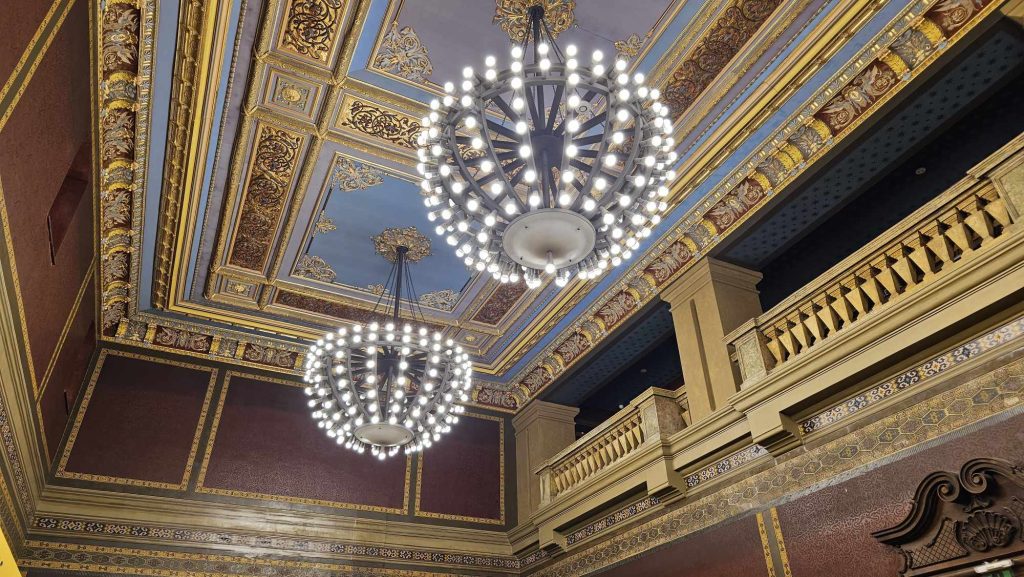 Τhe closing of the Brancuși exhibition, in Timisoara, Romania took place at the Palace of Culture and offered an emotional retrospective of this year, filled with unique moments that will remain in everyone’s hearts.
Τhe closing of the Brancuși exhibition, in Timisoara, Romania took place at the Palace of Culture and offered an emotional retrospective of this year, filled with unique moments that will remain in everyone’s hearts.
Η τελετή λήξης της Έκθεσης Brancusi πραγματοποιήθηκε στο Μέγαρο Πολιτισμού και πρόσφερε μια συγκινητική αναδρομή της φετινής χρονιάς, γεμάτη μοναδικές στιγμές που θα μείνουν στις καρδιές όλων.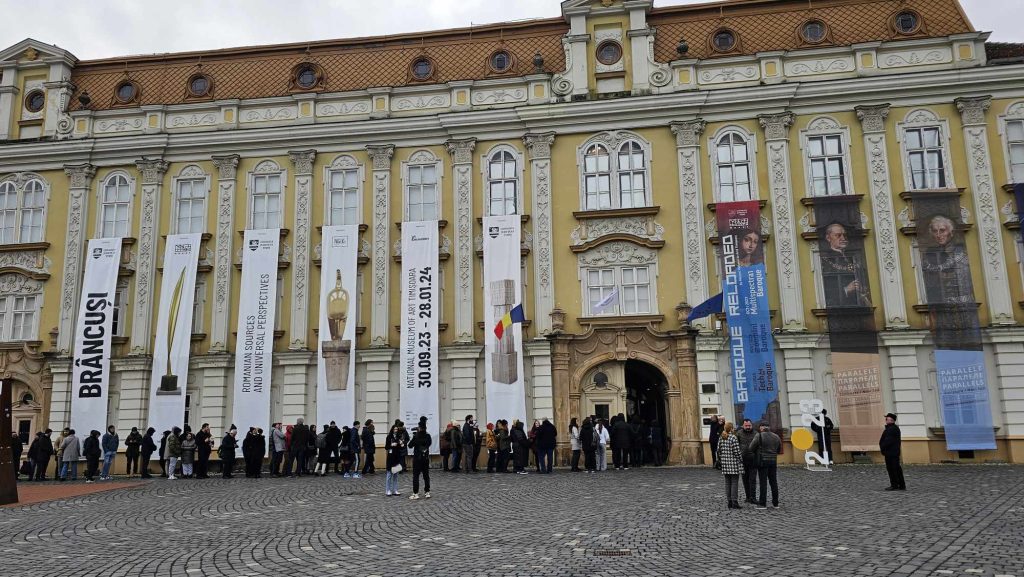 The closing at the Palace of Culture, of the memorable exhibition “Brancusi: Romanian Sources and Universal Perspectives,” an exceptional cultural event that attracted thousands of visitors.
The closing at the Palace of Culture, of the memorable exhibition “Brancusi: Romanian Sources and Universal Perspectives,” an exceptional cultural event that attracted thousands of visitors.
Η τελετή λήξης στο Μέγαρο Πολιτισμού, της αξιομνημόνευτης έκθεσης «Brancusi: Romanian Sources and Universal Perspectives», ένα εξαιρετικό πολιτιστικό γεγονός που προσέλκυσε χιλιάδες επισκέπτες.




